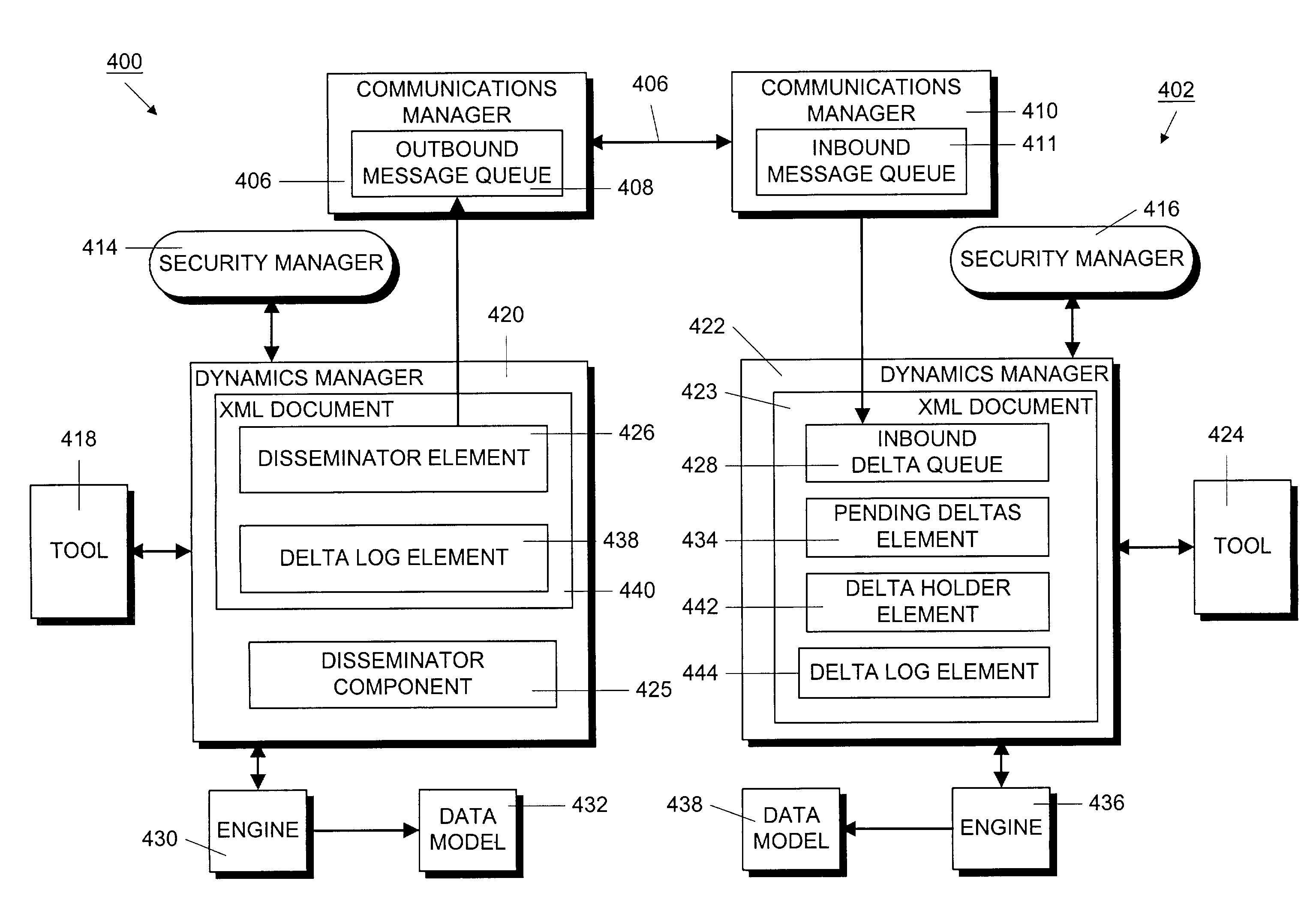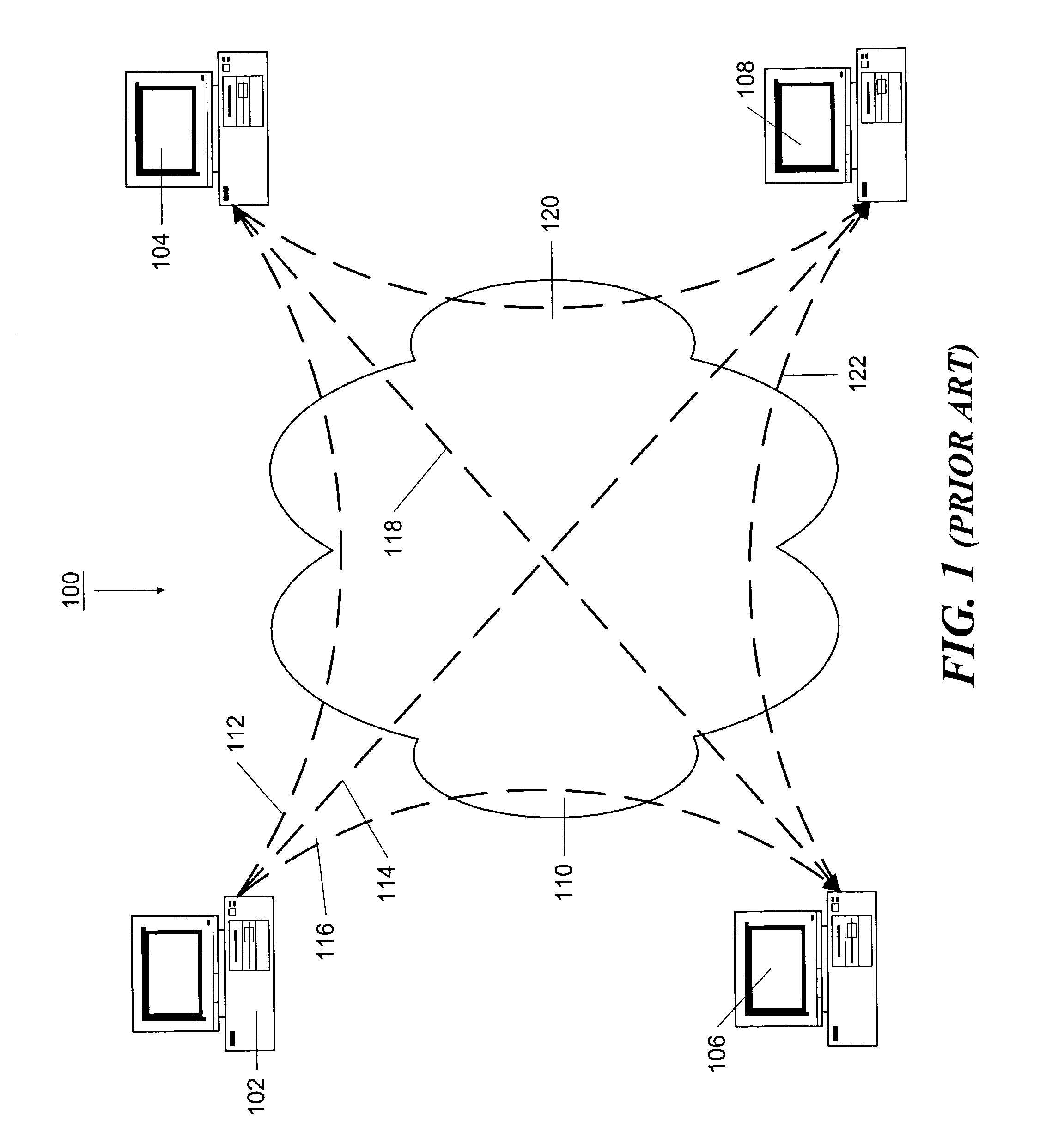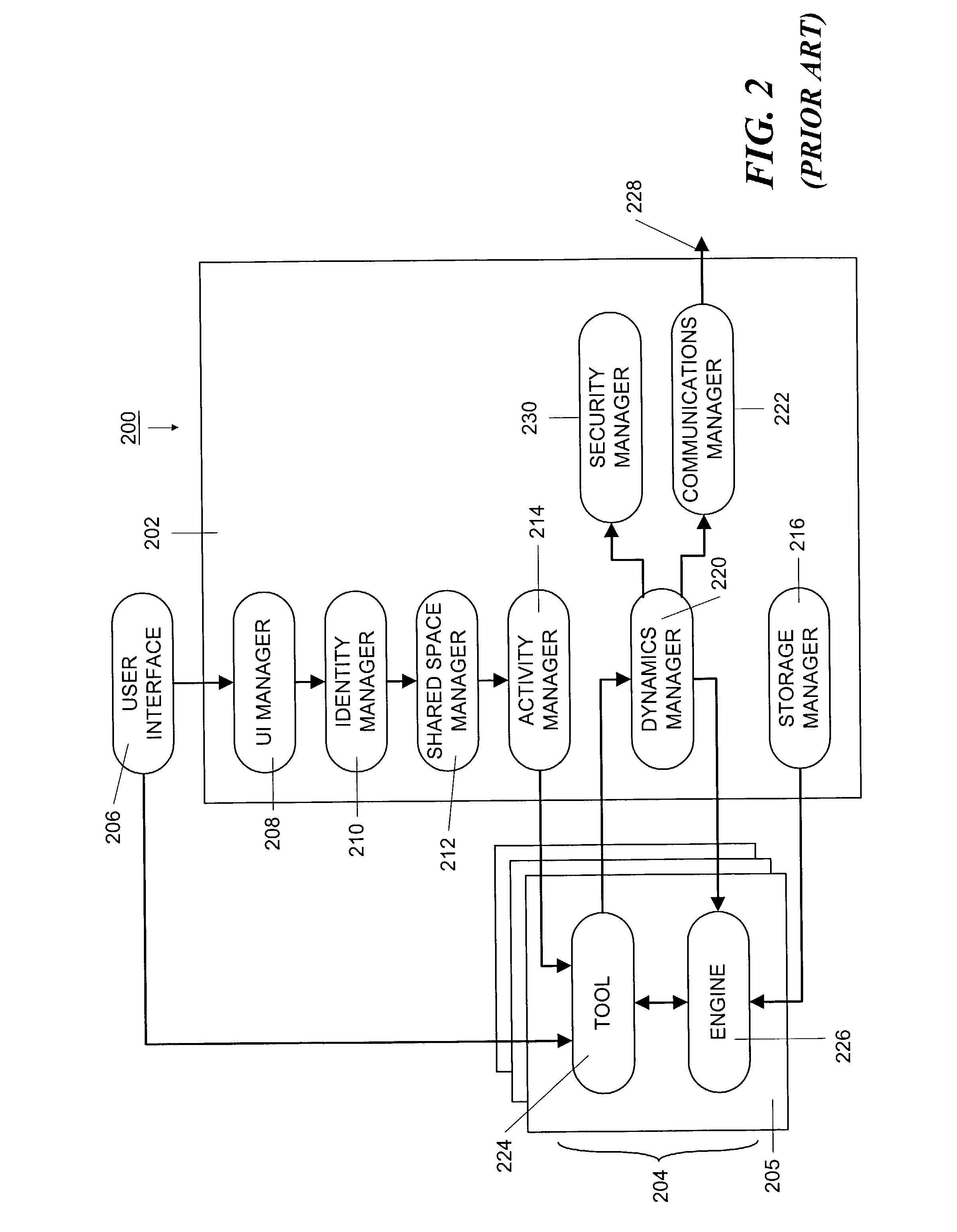Method and apparatus for maintaining consistency of a shared space across multiple endpoints in a peer-to-peer collaborative computer system
a computer system and shared space technology, applied in the field of peer-to-peer collaborative computer systems, can solve the problems of inability to centralize data repository and long startup delay for collaborators
- Summary
- Abstract
- Description
- Claims
- Application Information
AI Technical Summary
Benefits of technology
Problems solved by technology
Method used
Image
Examples
Embodiment Construction
[0037]FIG. 1 illustrates, in a very schematic form, a peer-to-peer collaboration system 100 in which collaborating computers are connected to each other by a network 110, such as the Internet. Although various networks can be used with such a system, in the discussion below, the network 110 is assumed to be the Internet. In this system, the collaborating computer systems constitute peer units 102-108, and communications through the Internet 110 can be directed from one peer unit to another, without intermediaries. Each peer unit 102-108 can be implemented as a personal computer or other form of network-capable device, such as a set top box or hand-held device.
[0038]Peer-to-peer communications can be made directly between peer units. For example, peer unit 102 may communicate directly with peer units 104, 106 and 108, as indicated schematically by dotted links 112, 116 and 114, respectively. In a similar manner, peer unit 104 can connect to units 108 and 106 via connections 120 and 1...
PUM
 Login to View More
Login to View More Abstract
Description
Claims
Application Information
 Login to View More
Login to View More - R&D
- Intellectual Property
- Life Sciences
- Materials
- Tech Scout
- Unparalleled Data Quality
- Higher Quality Content
- 60% Fewer Hallucinations
Browse by: Latest US Patents, China's latest patents, Technical Efficacy Thesaurus, Application Domain, Technology Topic, Popular Technical Reports.
© 2025 PatSnap. All rights reserved.Legal|Privacy policy|Modern Slavery Act Transparency Statement|Sitemap|About US| Contact US: help@patsnap.com



